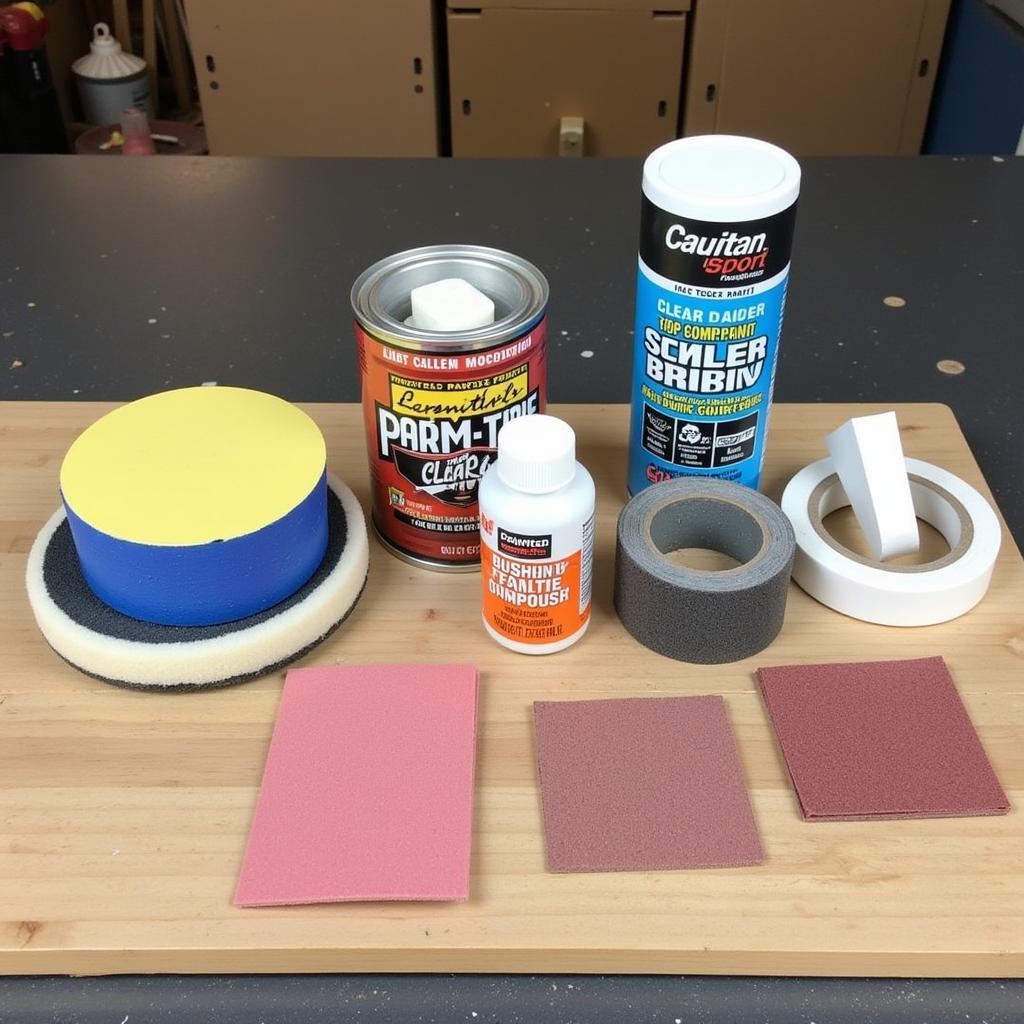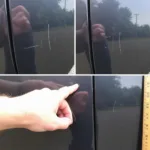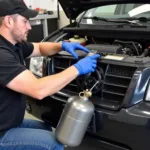Learning how to repair paint lacquer on a car can save you a significant amount of money and keep your vehicle looking its best. Whether it’s a minor scratch, a swirl mark, or more substantial clear coat damage, understanding the repair process can empower you to tackle the issue effectively. This guide will walk you through the steps involved in repairing car paint lacquer, from assessing the damage to achieving a professional-looking finish.
If you are dealing with minor scratches or swirl marks, you may be able to address the issue with a polishing compound. Deeper scratches, however, might require sanding and repainting the affected area. Knowing how to differentiate between these scenarios is crucial for a successful repair. For a comprehensive understanding of peeling paint repair, you can refer to our guide on how to repair paint peeling on car.
Assessing the Damage: Know Your Enemy
Before you begin any repair work, it’s essential to assess the extent of the damage. This will determine the appropriate course of action and the materials you’ll need. Is the damage limited to the clear coat, or has it penetrated the base coat? Determining the depth of the damage is the first step in successful car paint lacquer repair.
Gathering Your Supplies: Tools of the Trade
Having the right tools and materials is essential for a successful repair. This typically includes sandpaper of varying grits, polishing compound, rubbing compound, a buffing pad, masking tape, car paint (if necessary), clear coat, and primer. For mobile car paint repair services in Michigan, check out mobile car paint repair michigan.
Repairing Minor Scratches and Swirl Marks: A Gentle Touch
Minor scratches and swirl marks can often be removed with a polishing compound. Apply a small amount of the compound to a clean microfiber cloth and gently rub it onto the affected area using circular motions. This process will level out the clear coat and remove the imperfections.
Repairing Deeper Scratches: A More Involved Approach
For deeper scratches that have penetrated the base coat, you’ll need to sand down the area, apply primer, and repaint. Start by sanding the damaged area with progressively finer grits of sandpaper until the scratch is no longer visible. Then, apply a thin coat of primer, followed by several thin coats of car paint, allowing each coat to dry before applying the next. For specific solutions on lacquer peeling, visit our guide on car paint lacquer peeling repair.
Applying Clear Coat: The Protective Shield
Once the paint has dried completely, apply several thin coats of clear coat, again allowing each coat to dry before applying the next. This will protect the paint and restore the shine to your car’s finish. For car spray paint repair services in Singapore, you can check out car spray paint repair singapore.
Finishing Touches: Buffing and Polishing
After the clear coat has dried, buff and polish the repaired area to blend it seamlessly with the surrounding paint. This will give your car a professional-looking finish. If your car paint is peeling, you can find helpful advice on repair car paint peeling.
Conclusion: A Job Well Done
Knowing how to repair paint lacquer on a car can save you time and money. By following these steps, you can restore your car’s finish and keep it looking its best. Remember to assess the damage, gather the right supplies, and take your time with each step to achieve a professional-looking result.
FAQs
- What is car paint lacquer? Car paint lacquer is a clear coat applied over the base coat to protect it from UV rays, scratches, and other environmental damage.
- Can I repair paint lacquer myself? Yes, minor scratches and swirl marks can often be repaired at home with the right tools and materials.
- What do I need to repair car paint lacquer? You’ll need sandpaper, polishing compound, rubbing compound, a buffing pad, masking tape, car paint (if necessary), clear coat, and primer.
- How long does it take for clear coat to dry? Clear coat typically dries within a few hours, but it’s best to wait 24 hours before buffing and polishing.
- How can I prevent paint lacquer damage? Regularly washing and waxing your car can help protect the paint lacquer from damage.
- When should I seek professional help for car paint repair? If the damage is extensive or you’re not comfortable with DIY repairs, it’s best to consult a professional.
- How much does professional car paint repair cost? The cost varies depending on the extent of the damage and the type of repair needed.
You might also find these related articles helpful: “Understanding Car Paint Problems” and “DIY Car Maintenance Tips.”
Need more help? Contact us via WhatsApp: +1(641)206-8880, or Email: [email protected]. Our customer support team is available 24/7.



